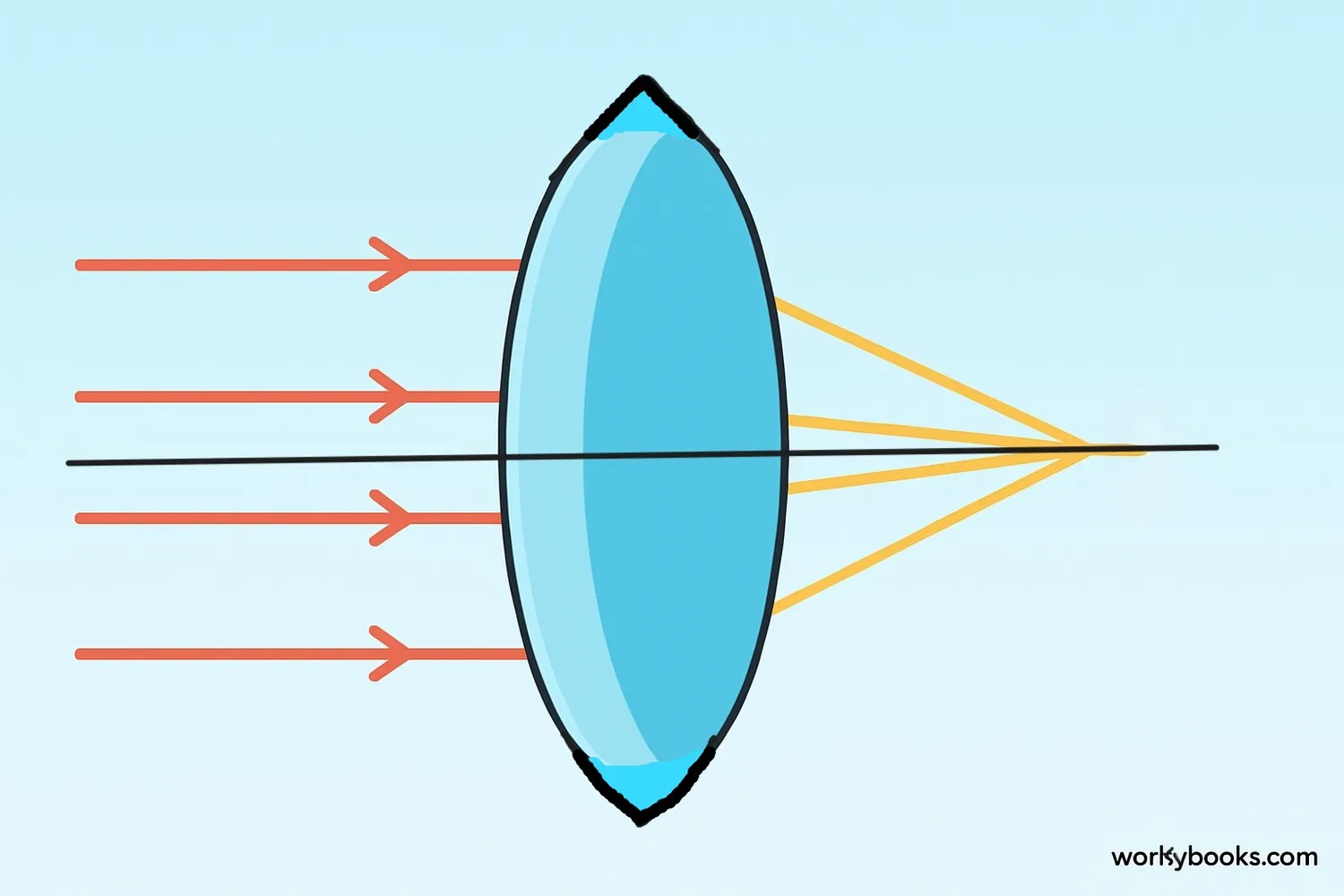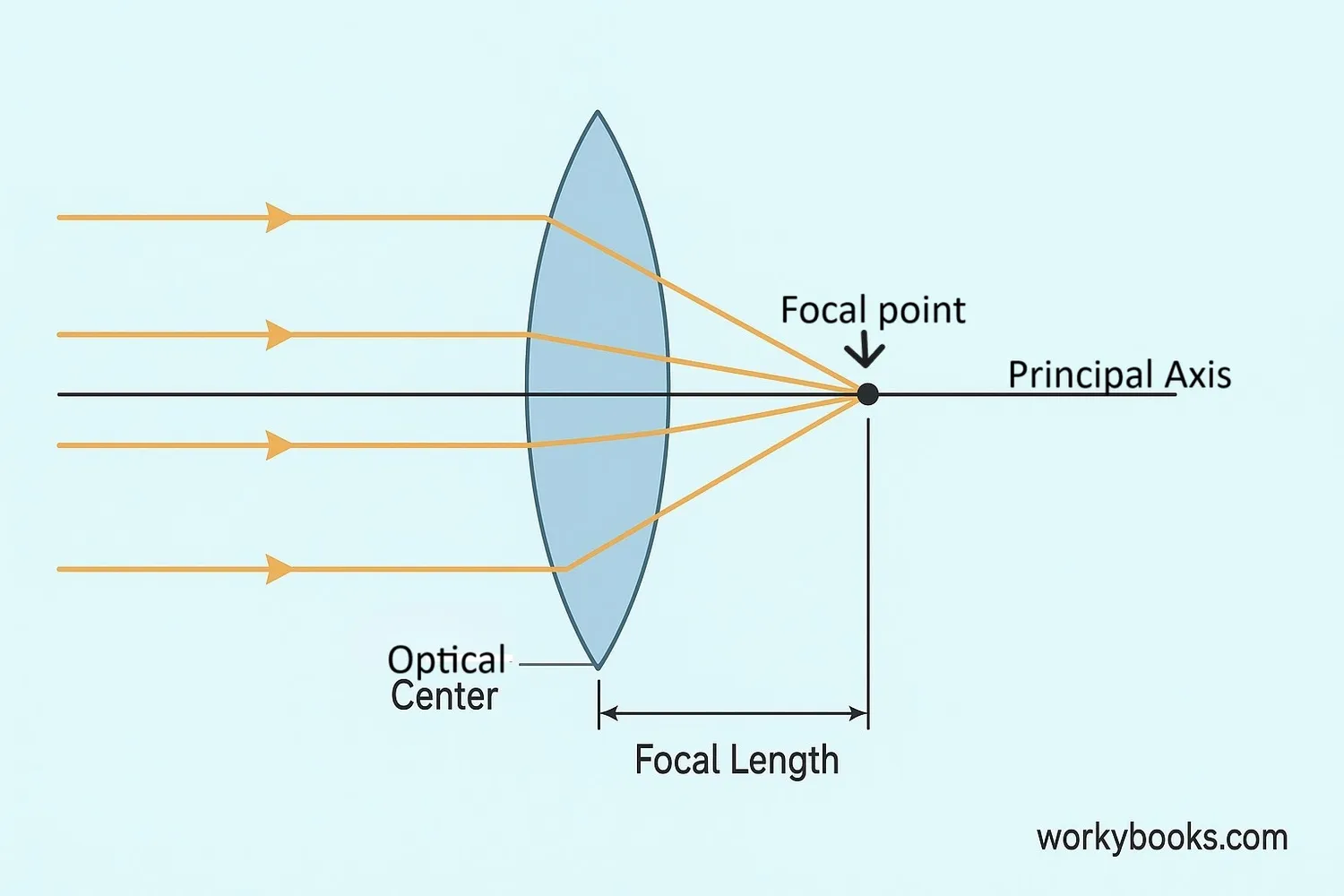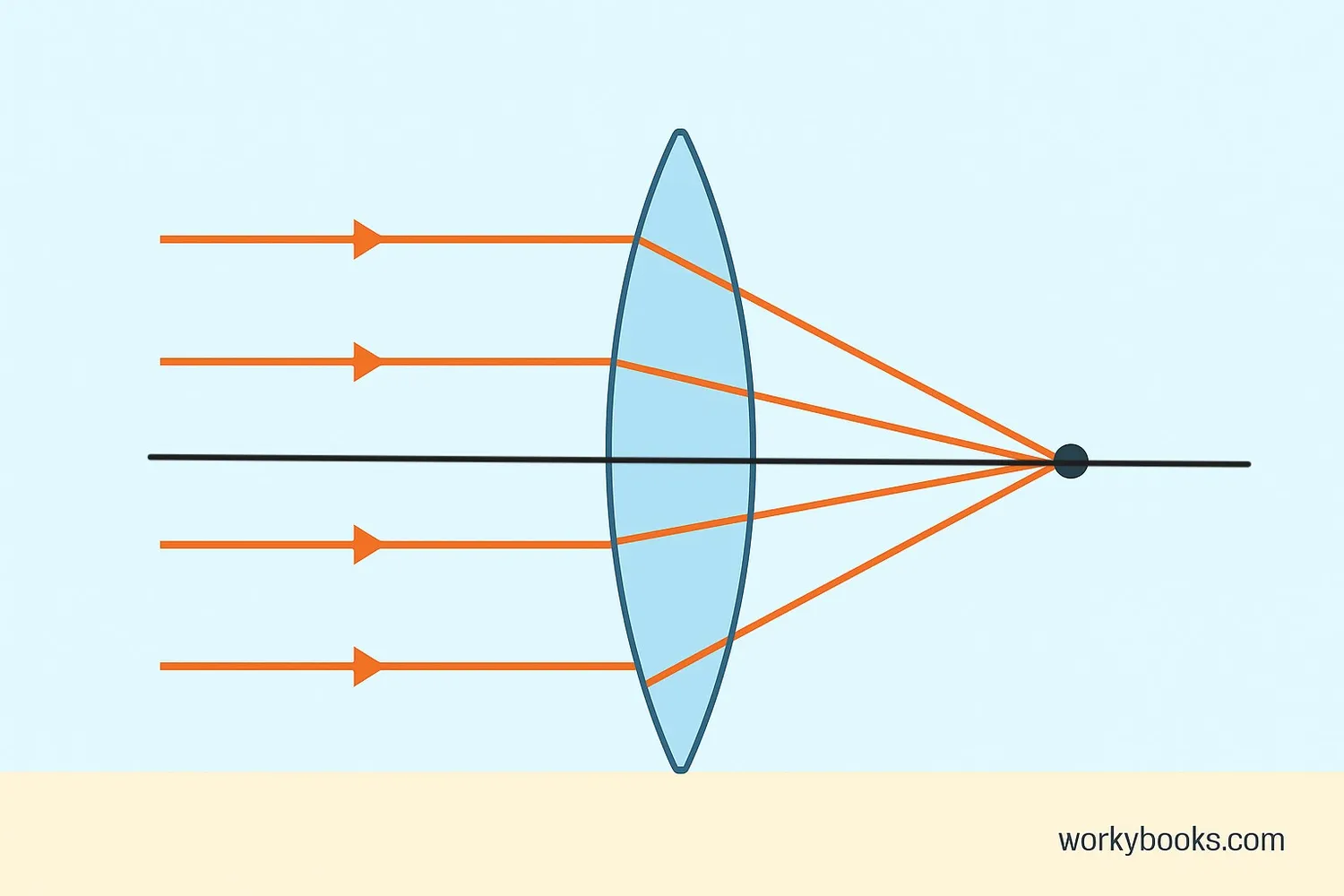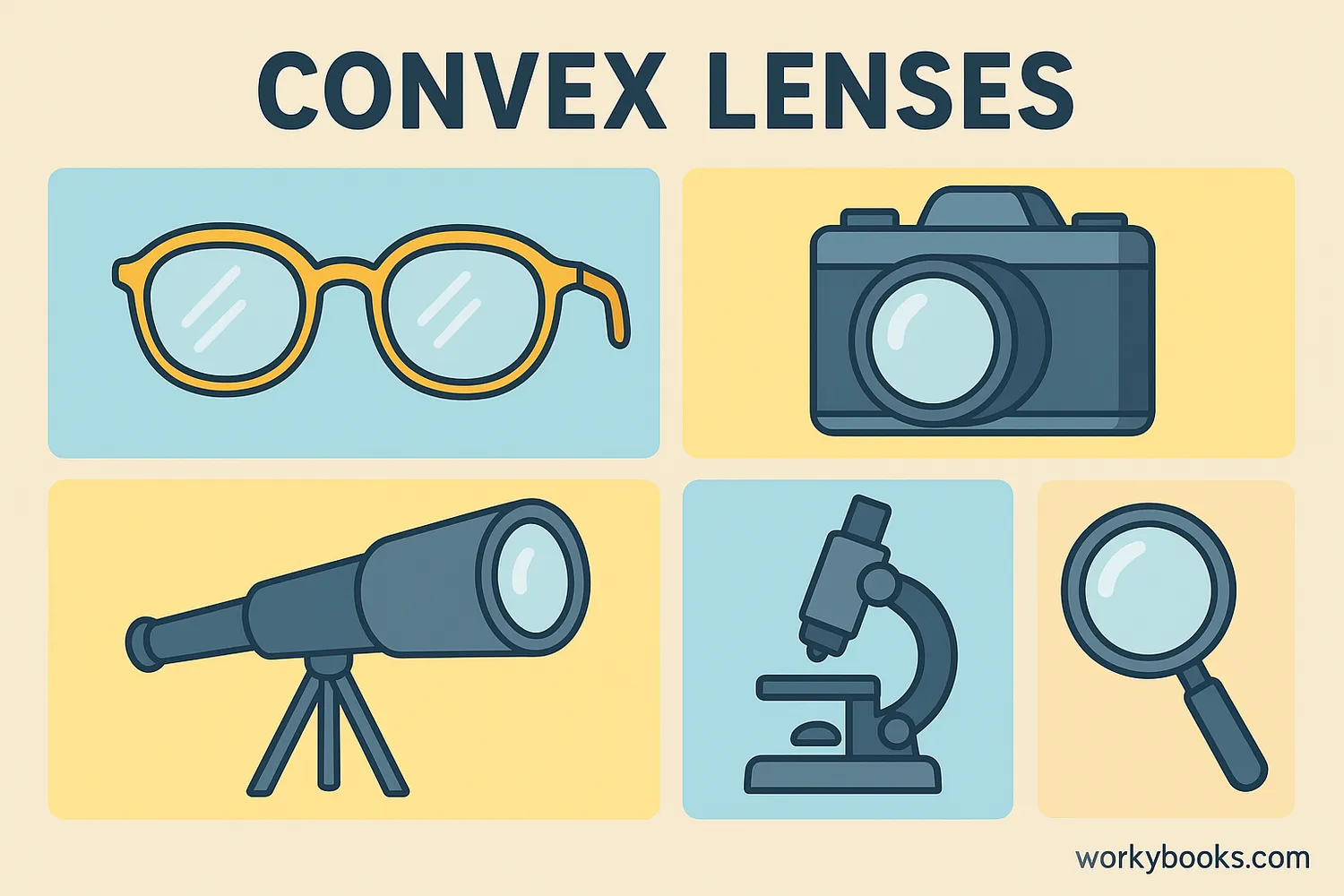Convex Lens - Definition, Examples, Quiz, FAQ, Trivia
Discover how convex lenses bend light to magnify and focus our world!
What is a Convex Lens?

A convex lens (also called a converging lens) is a special piece of curved glass or plastic that bends light rays. It's thicker in the middle than at the edges, which makes light rays come together at a point.
Think of it like a magnifying glass - when you hold it over text, the letters look bigger! That's because the convex lens bends the light rays to make images appear larger. Convex lenses are everywhere - in eyeglasses, cameras, telescopes, and even our eyes!
Light Fact!
The word "lens" comes from the Latin word for "lentil" because early lenses were shaped like lentils!
Convex Lens Properties & Diagram

Every convex lens has special parts that help it work:
Optical Center
The center point of the lens where light passes straight through
Principal Axis
An imaginary horizontal line through the optical center
Focal Point
Where parallel light rays meet after passing through the lens
Focal Length
The distance from the optical center to the focal point
Convex lenses have important properties:
• They converge (bring together) light rays
• They can form both real and virtual images
• They can make objects appear larger or smaller
• The focal length determines how strongly the lens bends light
How a Convex Lens Works

Convex lenses work through refraction - the bending of light when it passes from one material to another. Here's how it works:
When parallel rays of light enter a convex lens, the glass or plastic slows them down. Light rays that hit the thicker center of the lens slow down more than rays at the edges. This makes the rays bend inward and meet at the focal point.
Light Enters
Parallel light rays approach the convex lens
Refraction Happens
Light slows down and bends as it passes through the lens
Convergence
Rays bend inward and meet at the focal point
Focal Length Fact!
A lens with a shorter focal length bends light more strongly than one with a longer focal length. That's why powerful magnifiers have very curved surfaces!
Real-World Uses of Convex Lenses

Convex lenses are everywhere in our daily lives! Here are some important uses:
Eyeglasses
Help people with farsightedness see nearby objects clearly
Cameras
Focus light to create sharp images on film or digital sensors
Microscopes
Magnify tiny objects so we can see cells and bacteria
Telescopes
Collect light from distant stars and galaxies
Human Eye
The cornea and lens in our eyes are convex lenses!
Without convex lenses, we couldn't explore the microscopic world, see distant planets, or take photographs. They help scientists make discoveries and help millions of people see clearly every day!
Convex Lens Quiz
Test your lens knowledge with this quiz! Answer all 5 questions to see how much you've learned.
Frequently Asked Questions
Here are answers to common questions about convex lenses:
Fun Lens Trivia
Discover amazing facts about convex lenses:
Ancient Lenses
The oldest known lens is the Nimrud lens from ancient Assyria (750 BC)! It was likely used as a magnifying glass or to start fires.
Animal Lenses
Some shrimp have convex lenses in their eyes with 16 different color receptors (humans only have 3)! They see colors we can't imagine.
Space Telescopes
The Hubble Space Telescope's main mirror is a giant concave mirror, but it uses convex lenses in its cameras to capture amazing space images!
World's Largest Lens
The Yerkes Observatory telescope has the world's largest convex lens - 40 inches across! It weighs 500 pounds and was made in 1895.


